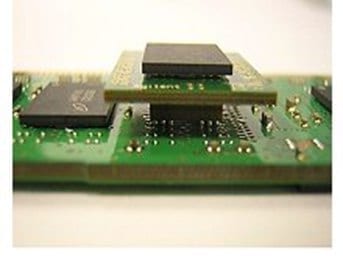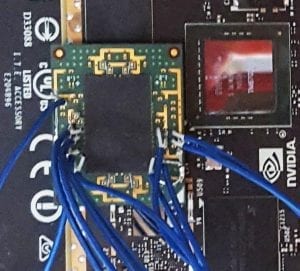Request more information here

Embedded Memory Testing
FuturePlus Systems will use its extensive cache of test equipment, experience and know how to perform an Embedded Memory Audit or Debug.
Embedded Memory Audit: Embedded Memory, or sometimes referred to as ‘Memory Down’, is soldered to the PCB versus being on a DIMM or SODIMM module. This audit will ensure that the DRAM part can be operated at the speeds it was designed for and within the JEDEC specification. Critical applications such as Medical Devices, Defense and Aerospace or Financial applications need to ensure correct operation of the DRAM Memory as corruption can have disastrous results. FuturePlus Systems has helped several customers find various problems resulting from:
- The BIOS programming the DRAM incorrectly
- Variations in Manufacturing that then resulted in Memory Failures in the field.
- Software that programs the Memory Controller incorrectly thus causing JEDEC specification violations.
Procedure: This testing will be broken into several parts. The first is the electrical audit, the second is the protocol and timing JEDEC specification audit, third is Performance Timing Analysis, the fourth is Mode Register Test and lastly is Row Hammer testing. In order to perform the testing the DRAM parts will be ‘interposed’ using Keysight BGA Interposers.
Electrical Audit: This testing ensures that the signals at the DRAM part are acceptable with regards to signal swing, alignment, data valid eye size and that none of the strobe signals, data signals, address, command or control signals look appreciably degraded with respect to their form or function. It will be a qualitative measurement. Eye size will be measured using the Keysight Logic Analyzer at the DRAM part via the BGA Interposer.
Protocol Timing Audit: This test procedure ensures that the BIOS has programmed the memory controller correctly for key timing parameters of the DDR memory. It also ensures that under heavy traffic loads the memory controller adheres to the JEDEC specification. DRAM soft errors can result if the JEDEC specification has been violated by commands being too close together or too far apart.
Performance Timing Audit: The DDR Detective® margin testing feature will be used under heavy traffic load to see how fast the memory controller is issuing transactions. This will be compared to the JEDEC specification to see if any performance gaps can be found. For example, if the minimum Read to Read Same Bank Group is 5 clocks and the system consistently operates at 10 that is 5 clocks of performance being left out of the system. Over billions of transactions this can add up to a considerable performance hit. This test can also be run while the system is executing the end users application or a representative workload. Which can give good insight as to why a particular server does not do well under certain workloads.
Mode Register Settings: In many cases the BIOS can program the Memory Controller incorrectly due to programming errors. These Mode Register settings should be consistent and within the JEDEC specification. These will be checked for accuracy.
Row Hammer Testing: As geometries shrink and capacities increase DDR Memory cells are susceptible to leakage current from adjacent cells. In the case of DDR Memory a ROW subjected to excessive ACTIVATE commands can leak current into adjacent ROWS. This ROW is referred to as the ‘aggressor’. If the adjacent ROWS, called the victim ROWS, are on the tail end of the cyclical refresh cycle their charge is low. Thus they are susceptible to leakage current that can cause a bit flip. The failure of the DDR Memory cell to hold its charge due to leakage current from an adjacent ROW when the adjacent ROW is targeted with excessive ACTIVATE commands is known as “Row Hammer”. The name was coined because the ROW is being ‘hammered’ with ACTIVATE commands. More information on this can be found on the DDR Detective web site.
FuturePlus System will run software and use the FS2800 DDR Detective® to verify that excessive ACT commands are being generated. If a Row Hammer Failure is found a report will be generated.
Documentation
The following documents will be created and sent to the customer.
- Eye Scan results with ‘eye’ for each signal
- Burst Scan for each byte (including check bits) for both Reads and Writes
- JEDEC Protocol Violation Report
- Margin Testing Report
- Mode Register Report
- Row Hammer Testing Results
Summary
FuturePlus Systems Embedded Memory Testing Services can be used to find problems in manufacturing, help diagnose failed systems that come back from the field or just as a general audit to ensure quality.


